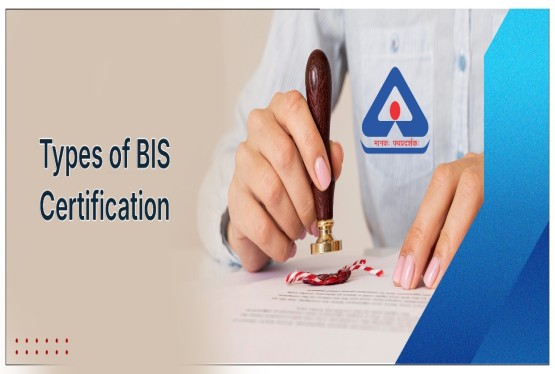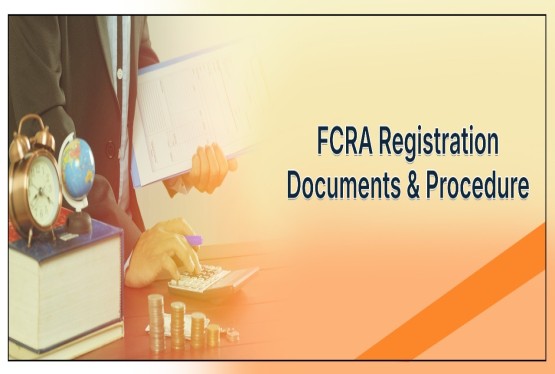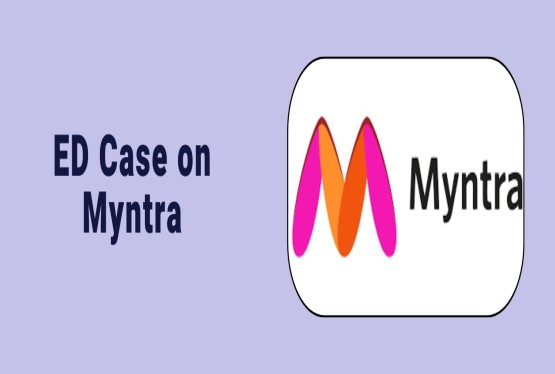The Reserve Bank of India (RBI) has recently announced major revisions to its gold loan regulations, which are expected to increase the growth prospects of Non-Banking Financial Companies (NBFCs). Crisil Ratings has highlighted how these revised norms, especially the increase in the loan-to-value (LTV) ratio, will increase NBFCs' lending capacities, particularly in the rural and semi-urban regions where gold loans are prevalent. The new guidelines are scheduled to be implemented from April 1, 2026, giving sufficient preparation time for financial institutions.
Gold Loans in India
Gold loans involve borrowing money against the collateral of gold jewellery or ornaments. This is one of the most accessible credit instruments for people, especially in rural India, where traditional banking systems are often out of reach. In these areas, gold loans serve as an important financial cushion during emergencies or unforeseen needs.
NBFCs like Manappuram Finance and Muthoot Finance dominate the organised gold loan market due to their simplified documentation, faster loan processing, and doorstep service offerings. Unlike banks, NBFCs are often more flexible and consumer-friendly, which is why they are the preferred option for gold loans.
RBI’s Revised Gold Loan Norms
The RBI has made several key changes to the gold loan framework, all aimed at improving credit access while ensuring financial discipline. Crisil Ratings has evaluated these new norms and stated that they will drive expansion and profitability in the NBFC sector. Below are the most important updates and their detailed explanations.
Increase in Loan-to-Value (LTV) Ratio for Small Loans
One of the most impactful revisions is the increase in the LTV ratio for loans up to Rs.2.5 lakh. The earlier LTV ceiling was 75%, but it has now been raised to 85%. This means that if the pledged gold is valued at Rs.1 lakh, borrowers can now receive up to Rs.85,000 as a loan, instead of Rs.75,000 previously.
This change is especially beneficial for low-income borrowers who typically require small-ticket loans. It provides them with greater access to credit without needing to pledge additional assets. For NBFCs, it opens a wider market to cater to customers with smaller financial needs, thereby boosting loan volumes and outreach.
No Credit Appraisal Required for Loans Under Rs.2.5 Lakh
To further ease the loan disbursement process, the RBI has waived the requirement of a complete credit appraisal for loans below Rs.2.5 lakh. This means NBFCs can disburse loans faster as they don’t need to conduct time-consuming evaluations for every borrower in this segment. This move is particularly aimed at increasing formal credit penetration among rural and underprivileged borrowers. By simplifying the loan approval process, NBFCs can bring more people into the formal financial system.
Limitations on Pledging of Gold and Silver
The RBI has introduced specific limits on the quantity of gold and silver that can be pledged. Borrowers can pledge up to 1 kg of gold ornaments and 10 kg of silver ornaments. For coins, the limit is 50 grams for gold and 500 grams for silver. This restriction prevents the use of unprocessed or large-scale bullion as collateral, ensuring that gold loans remain focused on personal and small-business needs. It adds another layer of security and compliance for lenders while standardizing the nature of collateral accepted.
Bullet Repayment Loans Capped at 12 Months
A major change concerns bullet repayment loans, where the entire principal and interest are repaid at the end of the loan tenure. Under the revised guidelines, such loans must now be repaid within a maximum of 12 months. Previously, these loans could be rolled over indefinitely, leading to risk accumulation. By introducing a cap, the RBI ensures timely repayment and reduces the chance of default. This benefits NBFCs by limiting their exposure to prolonged credit risk.
Disbursement LTV in Bullet Loans Increased
According to Crisil Ratings, the disbursement LTV for bullet loans may increase from the current 65% to 68% range to 70% to 75%. This means NBFCs can lend more against the same value of gold even after accounting for accrued interest. While this enhances loan capacity, it also requires NBFCs to carefully monitor gold price fluctuations and manage risks effectively. Disbursing loans at higher LTVs leaves less buffer in case of price declines.
Timely Return of Pledged Gold or Silver
Another significant consumer-friendly regulation is the mandate for lenders to return pledged gold or silver within seven working days of loan closure. Any delay in doing so will require them to pay a compensation of Rs.5,000 per day to the borrower. This clause aims to improve customer trust in the lending process and hold NBFCs accountable for timely service. It also sets a high standard for customer grievance redressal.
Transparent Auction Procedure in Case of Default
If a borrower defaults, NBFCs must now follow a strict and transparent auction process. Before initiating the auction, proper notice must be given to the borrower. The reserve price must be at least 90% of the market value. If two auction attempts fail, it can be lowered to 85%. Additionally, any surplus amount from the auction must be refunded to the borrower within seven working days. These steps ensure fairness and protect the borrower’s interests during loan recovery processes.
Gold Valuation Based on 22-Carat Purity
To standardize valuation practices, gold ornaments will now be valued at their 22-carat equivalent. For example, if a piece of jewellery is 18 or 20 carats, its value will be adjusted accordingly and calculated based on the 22-carat market rate. This ensures uniformity and eliminates discrepancies in collateral valuation across different lenders.
Ownership Proof for Collateral
Borrowers must provide either a purchase receipt or a declaration as proof of ownership of the pledged gold. This prevents fraudulent pledging of stolen or borrowed jewellery and strengthens legal accountability in gold lending.
Why Did the RBI Implement These Changes?
The RBI has introduced these reforms to improve transparency, reduce borrower exploitation, and increase access to formal credit. By empowering NBFCs to lend more with less red tape, the central bank aims to bring more people into the fold of financial inclusion.
These measures are especially important in rural and semi-urban areas where gold is often the only valuable asset people can offer as collateral. By easing the loan process and ensuring borrower protection, RBI is facilitating safer and broader credit delivery.
Impact on NBFCs: Crisil Ratings' Perspective
According to Crisil Ratings, NBFCs focusing on gold loans will see dual benefits. First, the increased LTV cushions help offset accrued interest during bullet repayments without exceeding the permissible loan value. Second, higher LTV ceilings offer greater lending headroom, allowing these institutions to increase disbursals without requiring additional gold.
Crisil Ratings estimates that nearly 70% of NBFCs’ gold loan portfolios consist of loans under Rs.5 lakh. Therefore, the revised norms are expected to have a massive positive impact on the majority of their lending base.
Increased Lending Capacity
By raising the LTV cap, NBFCs can disburse larger loans against the same gold value. This unlocks greater capital efficiency and leads to larger loan books. As a result, NBFCs can increase their customer base and improve revenues through interest earnings. The added flexibility also allows these firms to penetrate deeper into underserved markets, thereby expanding financial access.
Cushioning for Bullet Loans
The changes also help NBFCs manage risks better in bullet loans. By factoring in accrued interest in the LTV calculation, they now have clearer guidelines to stay within permissible limits while lending. This offers better clarity in loan structuring and reduces the regulatory risk of over-leveraging.
Need for Stronger Risk Management
With increased LTV comes higher risk. If gold prices fall, NBFCs may not recover the full loan amount from collateral sales. Hence, risk management becomes more critical than ever. NBFCs will need to improve internal systems, track gold market trends closely, and execute timely auctions in case of default. Proper segmentation of borrowers and risk-based pricing may also be necessary to ensure sustainability.
Operational Readjustments
To comply with the new norms, NBFCs must upgrade their IT systems, retrain staff, and revamp internal policies. Though these changes may involve short-term costs, the long-term benefits in terms of increased customer base and profit margins far outweigh the initial investments.
Overall Sectoral Impact
The new RBI guidelines are expected to act as a catalyst for growth in the gold loan segment. By making lending more inclusive and consumer-friendly, they lay the foundation for increased formal credit penetration. Gold loans often serve as the first step in formal borrowing for many rural customers. The new framework ensures that more people can access structured finance, thus contributing to overall economic empowerment.
For NBFCs, this is an opportunity to expand their market share, enhance operational efficiency, and improve profitability. However, they must balance aggressive lending with sound risk management to prevent future defaults.
Conclusion
The RBI’s revised gold loan norms, as analysed by Crisil Ratings, represent a major policy shift that encourages NBFC expansion while safeguarding borrower interests. By raising the LTV ratio and simplifying loan procedures for smaller borrowers, the central bank has paved the way for more inclusive financial growth. NBFCs that specialize in gold loans stand to benefit the most, provided they maintain strong risk assessment frameworks and adhere to regulatory compliance. The long-term outlook for the sector appears promising, with increased lending activity, better financial access for the underserved, and higher profitability for well-managed firms.
For those looking to enter the NBFC space, now is an ideal time to secure an NBFC license and align operations with RBI’s vision for a financially inclusive India. With proper planning, compliance, and innovation, NBFCs can truly become engines of grassroots economic development in the coming years.
To get expert assistance in NBFC registration and NBFC compliance management, connect through mail at info@ccoffice.in or Call/Whatsapp at +91 9988424211.
FAQs
Q1. What are the key changes introduced by RBI in its revised gold loan norms?
Ans. The RBI has introduced several significant changes including raising the Loan-to-Value (LTV) ratio for small gold loans to 85%, limiting bullet repayment loans to 12 months, simplifying credit appraisal for loans under Rs.2.5 lakh, and introducing strict timelines for returning pledged gold after loan closure. It also mandates proof of ownership for pledged gold and brings transparency to the gold auction process in case of default.
Q2. How does the increase in the LTV ratio benefit borrowers and NBFCs?
Ans. By raising the LTV ratio from 75% to 85% for loans up to Rs.2.5 lakh, borrowers can now access higher loan amounts against the same value of gold. For NBFCs, this change allows them to lend more without requiring additional collateral, thus expanding their customer base and increasing their lending portfolio, especially in rural and semi-urban areas.
Q3. What is Crisil Ratings’ assessment of the impact on NBFCs?
Ans. Crisil Ratings has highlighted that NBFCs will benefit in two main ways: better cushioning for accrued interest in bullet loans and more headroom to disburse higher loan amounts. Since approximately 70% of the gold loan portfolio consists of loans below Rs.5 lakh, the revised norms are expected to significantly enhance NBFC growth and profitability.
Q4. What are the new guidelines related to bullet repayment gold loans?
Ans. Bullet repayment loans, where both principal and interest are repaid at the end of the tenure, must now be settled within 12 months. The LTV at disbursement for such loans has also been revised upward to 70–75% to accommodate accrued interest. However, lenders must adopt stricter risk management practices to address gold price volatility and potential defaults.
Q5. Are there any new rules about the valuation and pledging of gold?
Ans. Yes, gold is now to be valued based on its 22-carat equivalent, even if the ornament is of lower purity. Borrowers can pledge a maximum of 1 kg of gold ornaments and 10 kg of silver, with limits also set on coins. This ensures standardization in valuation and prevents large-scale bullion pledging.
Q6. What customer-friendly measures are introduced for returning pledged gold?
Ans. The RBI mandates that lenders must return the pledged gold or silver within seven working days of full loan repayment. If delayed, the borrower is entitled to a compensation of Rs.5,000 per day. This enhances borrower protection and ensures timely redressal by NBFCs.
Q7. How does the new auction process ensure transparency during default?
Ans. If a borrower defaults, NBFCs must issue proper notice before auctioning the gold. The reserve price must be at least 90% of the market value, and if two auctions fail, it can be lowered to 85%. Any surplus amount from the auction must be refunded to the borrower within seven working days, ensuring fairness and transparency.
Q8. When will the new gold loan norms come into effect and how should NBFCs prepare?
Ans. The revised gold loan norms will come into effect from April 1, 2026. NBFCs are advised to use this period to upgrade their IT systems, train staff, strengthen risk management frameworks, and align operations with the new compliance structure to ensure a smooth transition and sustainable growth.












































































_crop10_thumb.jpg)







_Rules,_2025_learn_crop10_thumb.jpg)
























































































_crop10_thumb.jpg)








 in BIS FMCS_learn_crop10_thumb.jpg)










_crop10_thumb.jpg)















_crop10_thumb.jpg)





_Code C-888_learn_crop10_thumb.jpeg)
_learn_crop10_thumb.jpg)

































































_Certificate_learn_crop10_thumb.jpg)

_Certificate_(1)_crop10_thumb.jpg)















_learn_crop10_thumb.jpg)
_crop10_thumb.jpg)


















_Scheme_learn_crop10_thumb.jpg)


_learn_crop10_thumb.jpg)










